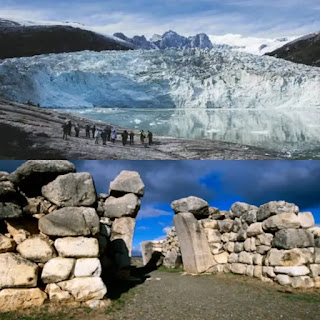[ad_1]
One of the most popular tourist sites in Chile’s Laguna San Rafael National Park, the Exploradores Glacier, has closed forever.
Exploradores Glacier closed. It is classified as one of the most popular tourist sites in Laguna San Rafael National Park in Chile, which has been a tourist destination for thousands of travelers for many years, thanks to its picturesque natural scenery. But after just two weeks of searching, hydrologists found that the glacier had suddenly become turbulent and dangerous. Therefore, the Chilean National Forest Company responsible for the natural parks has “forever” banned mountain hikers and local guides from visiting this pearl of Patagonia.
The Forest Department said in a message to tourists: “There is ambiguity regarding the behavior of the glacier, which poses a danger to tourists.” The high temperature in the region is causing the ice to melt, making it fragile and unstable. A huge piece of ice has peeled off from the main Exploradores massif, and fortunately no one was hurt. But the authorities do not want to take any more risks. The glacier has provided its services to people and will now be “at rest” until it melts completely. However, tourists still have a few decades to enjoy this ancient glacier from a distance, knowing that Laguna San Rafael Park is visited by more than 20,000 people every year.
Scientists say that if global temperatures continue to rise, two-thirds of the world’s glaciers will disappear completely by the end of the current century. This will cause sea levels to rise similar to the biblical flood, and millions of people will be forced to move from the coast to inland areas.
An ancient archaeological discovery of a sculpture “depicting the Sphinx” in Türkiye!
Archaeologists in Turkey have discovered an ornately carved 2,800-year-old elephant tusk in an area that may have once been an Iron Age “power centre”.
The ivory sculpture features a depiction of the legendary Sphinx, as well as a real lion and two tall plants that may represent the mythical “Tree of Life.” While the artwork dates back to the Iron Age, it was found in an archaeological layer above an ancient city, the abandoned Bronze Age Hittite capital Hattusa.
According to Andreas Schachner, an archaeologist at the German Archaeological Institute who has led excavations at Hattusa since 2006, the artifact shows that the Iron Age settlement at the site was an important place, even though it was founded after the Hittites abandoned the city in about 1200 B.C. AD, during what is known as the Late Bronze Age collapse.
“It is possible to say that this place is no longer a small town, but has become a more important place, and perhaps a center of power,” Schachner told Turkey’s state-owned Anadolu Agency.
The artifact is about 12 inches (30 cm) long and 4 inches (10 cm) wide, and Schachner said it may have been part of a piece of furniture.
He added to the agency: “It was likely that it was added as an ornament to a wooden box or furniture made of wood in its own time.”
Schachner explained that the piece was unique among finds at an Iron Age settlement built at the abandoned site of Hattusa, which is now located next to the Turkish village of Bogazköy, about 90 miles (145 kilometers) east of Ankara.
He said: “For the first time, we en’counter a work decorated with such a dense and beautiful landscape. Extensive excavations have been carried out on the Iron Age levels of Boğazköy, but we have never found such a detailed artifact before.”
He added that the symbols carved into the piece may reveal relationships between the settlement and other contemporary cultures.
Schachner said that after completing scientific studies of the ivory sculpture, it will be displayed in the Boğazköy Museum.
[ad_2]
Source link

